Don’t tell anyone, but I think that I might be getting a tad too old for this. I’m a wreck, tired, battered, and bruised.
At the end of last week my wife and I traveled south to the University of Georgia in Athens, Georgia to see our daughter-in-law graduate with her Ph.D. in chemistry, and to spend a few days seeing the sights since she and our son (who finished grad school a year earlier) will be moving back to the Washington, D.C. area in a few weeks.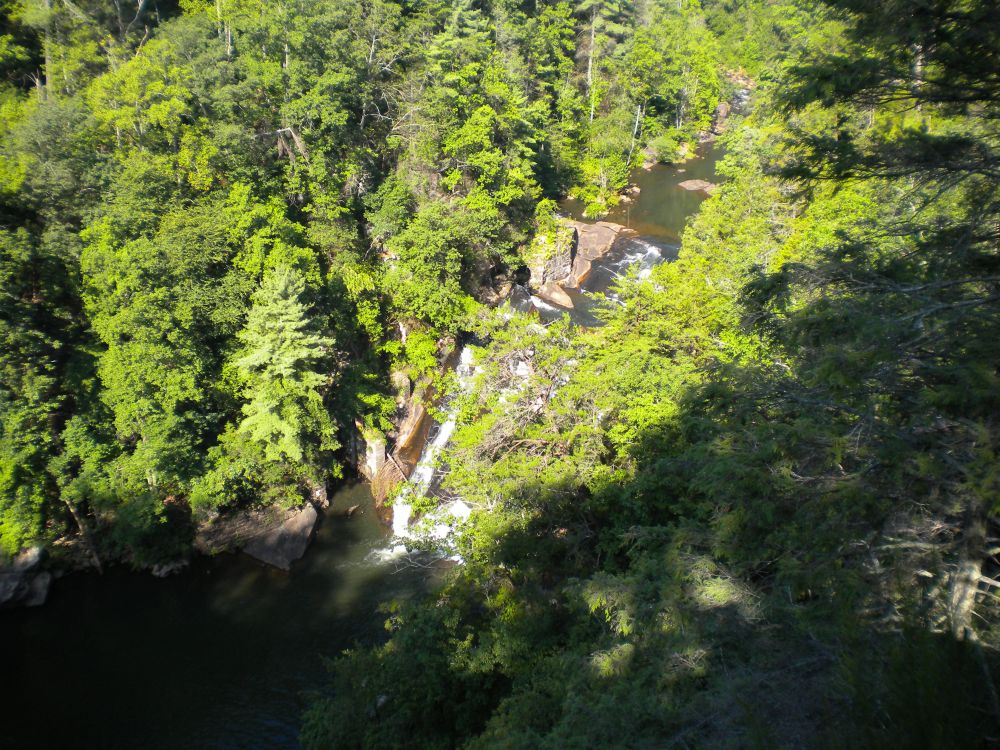
The graduation was Saturday morning, then the remainder of the day was spent visiting with the kids and her parents, who live not too far from our Virginia home. Sunday morning my wife and I set out for the Georgia Botanical Garden. I’ll get to back with a thorough description of our tour of the garden in a few days, but today (Monday) my wife and I have just returned from hiking Tallulah Gorge (above) with our son, and I’m whupped.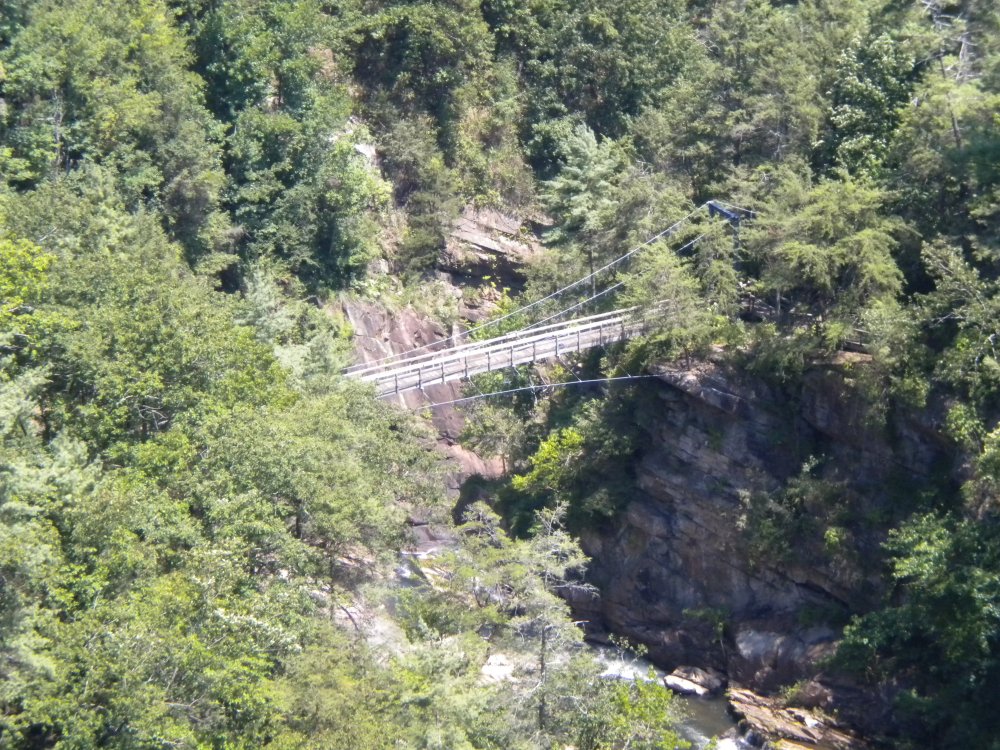
The hike down the gorge is 640 steps to a suspension bridge (above), then another 422 steps to the river. The hike out is far more strenuous, an 1,100 foot vertical climb over huge boulders scattered on the walls of the gorge. This is not an adventure for old-timers who spend much time puttering about the garden, and too little in aerobic activities, but we’ve lived through the experience, so it was a good one.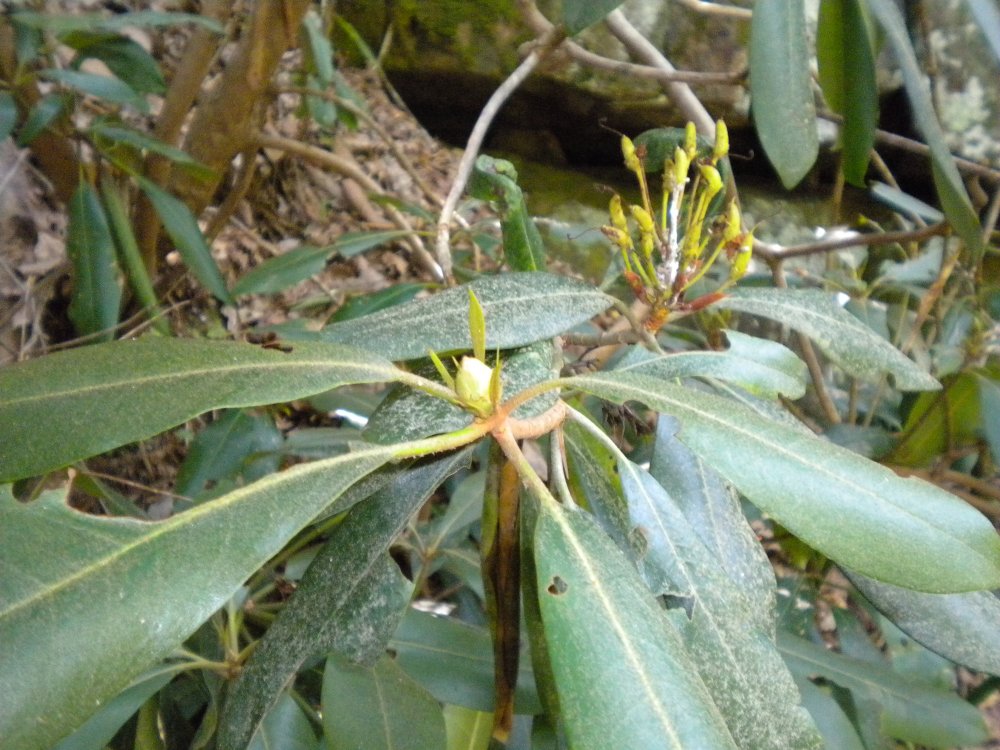
Along the trails were a variety of recognizable flora, and more than a few skinks and assorted small lizards clinging to the rocks. Nearest the top of the gorge were towering mountain laurels, but halfway down these were replaced by even taller rhododendrons (above). There were large leafed rhododendron that I am familiar with from travels through the North Carolina mountains, but also smaller leafed types (similar in appearance to PJM cultivars, though they are long past bloom) that I have not seen in the wild. Many were rooted in small crevices between huge boulders that were filled with wood debris and leaf litter, and though their leaves were curled in reaction to ninety-five degree temperatures, they were otherwise in fine health.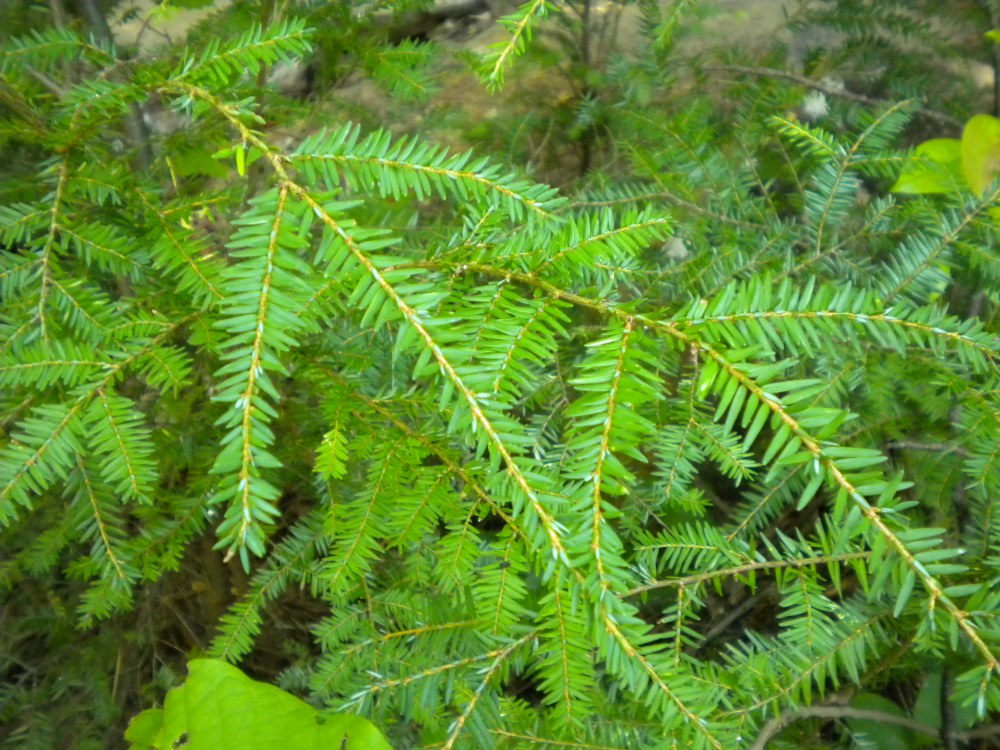
Small Carolina hemlocks (above) clung to the rocky walls of the gorge, though none were substantial in size. Near the bottom a hemlock was indentified as the Georgia state champion, and the trunk was only a foot in diameter, so this is sufficient evidence to pronounce that even native hemlocks grow reluctantly in the heat of the south.
At lower elevations (just above the raging river) there were abundant native American hollies (Ilex opaca, above), and beautyberries (Callicarpa, below) that were covered with berries that are a week or two short of turning to polished purple.
I saw few ferns (below) in the small pockets of soil, but one clump grew at the water’s edge as we hopped from one boulder to another along the river. I could not imagine that there was any soil at all, but the fern was well established and healthy, rooted into a calm spot as the river raged past.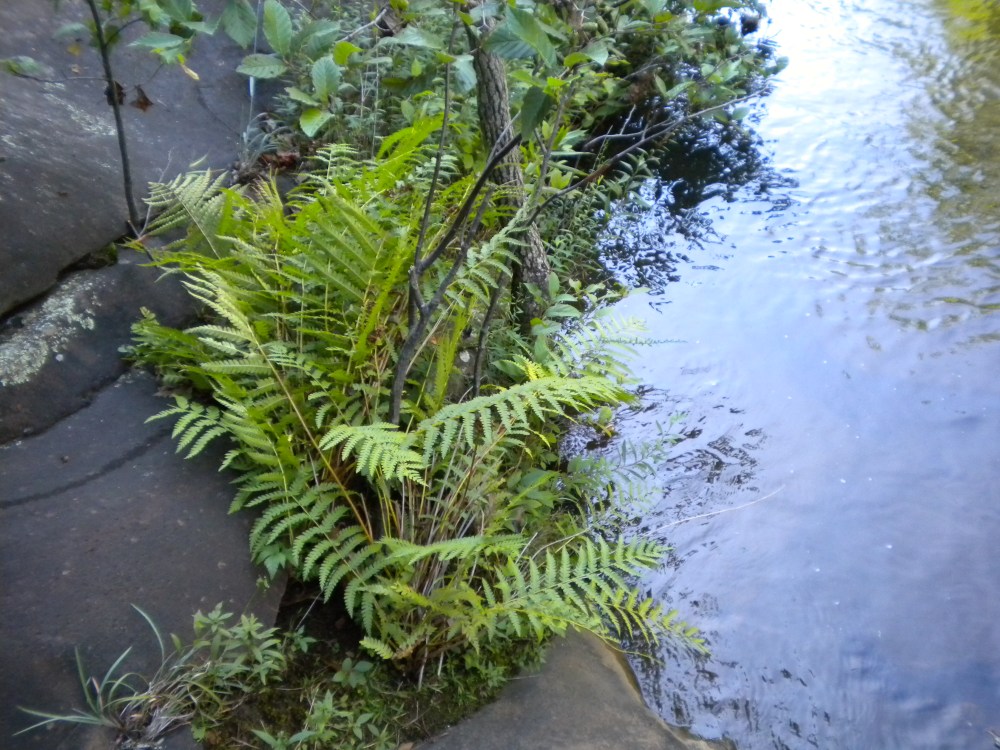
Along the trails were overlooks of the river falls below, but once the bottom of the gorge was reached the action began. The first river crossing required leaping from one wet boulder to another, and though my best leaping days are long behind me, I was able to cross without tumbling into the river. We climbed up and down over boulders the size of buses and small houses until we reached a large slab where water rushed over in a thin, slippery sheet so that adventurous hikers could slide into the deeper pool below.
Pratfalls ensued, with bruises and scraps, but fortunately no concussions, though there were occasions when any number of catastrophes were possible. Young teens and the more elderly were swept at high speed down the slick rock, wildly screaming and gesturing before they plunged into the deep pool (above).
Finally, play time was called to a close, and we began our ascent (above). The climb seemed nearly vertical, and of course old gardeners are not built for such things. But, after repeated breaks to catch our breath (and to settle the pounding heart) , the top of the gorge was reached safely, and then back to the visitors’ center for a few moments of air conditioning and cold water.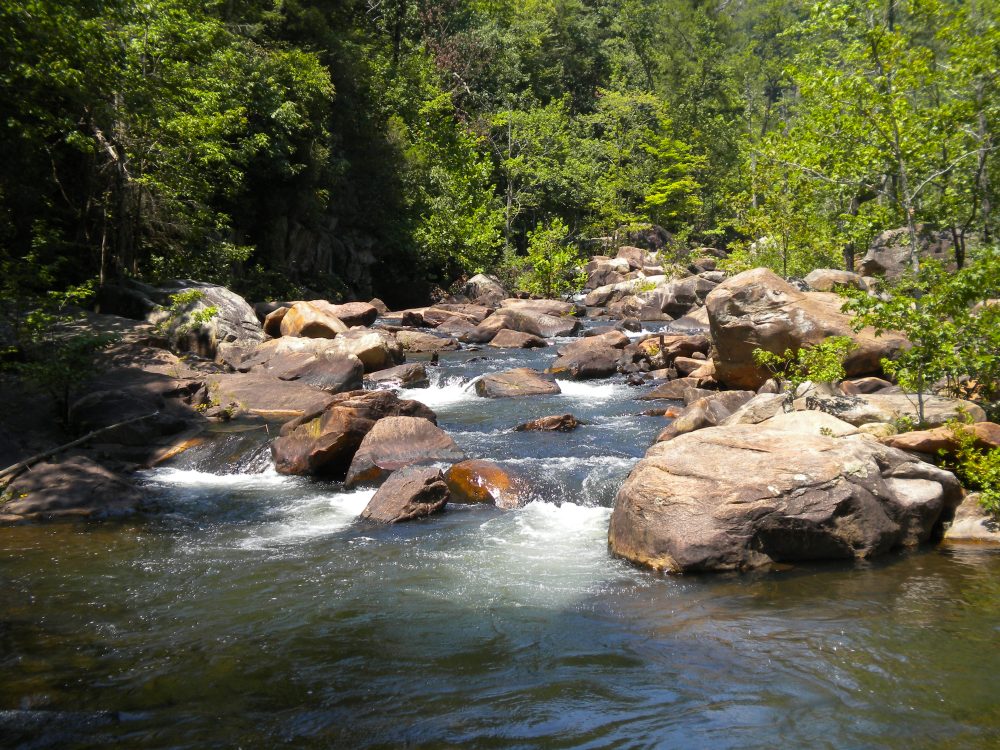
I imagine that the scraps and tired muscles will remind me of our visit to Tallulah Gorge for several days, and I hope to have enough energy in the morning for the drive home.
Good on you both (and all) for making the attempt and living to tell the tale!